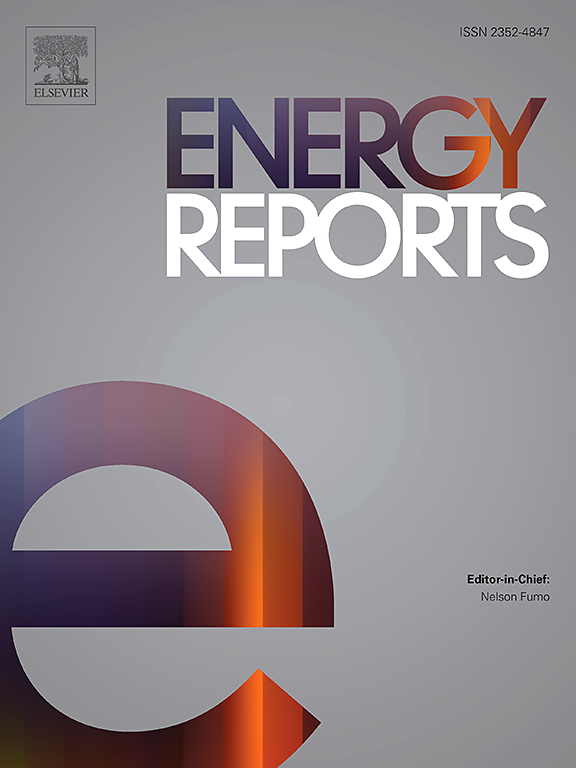State of charge estimation for lithium-ion batteries based on a digital twin hybrid model
IF 4.7
3区 工程技术
Q2 ENERGY & FUELS
引用次数: 0
Abstract
The estimation of the state of lithium-ion batteries is a critical aspect of battery management systems. However, the accuracy of such estimates deteriorates over time due to complex chemical reactions occurring within the battery as a result of repeated charging and discharging. To address this issue, this paper introduces a digital twin hybrid model (DTHM), integrating both an equivalent circuit model (ECM) and a neural network model (NNM). The method employs a residual technique to merge and enhance these models throughout battery operations, utilizing periodic operational outcomes to formulate calibration rules and dynamically calibrate parameters. Specifically, the augmented adaptive unscented Kalman filter method is applied within the ECM to reflect the dynamic behaviors and internal state of the battery. For the NNM, an importance sampling mechanism augments the training effect of neural network. Moreover, a dynamic calibration strategy, informed by digital twin technology, mitigates parameter uncertainties due to the internal evolution of the battery. Experiments conducted under diverse working and temperature conditions reveal that the DTHM achieves a synchronization error of less than 0.2% when aligning the physical and digital models, which attests to its high fidelity. Furthermore, at the early cycle, the DTHM demonstrated a maximum mean absolute error and a maximum root-mean-square error in estimating battery SOC of 0.0046 and 0.0058, respectively. Towards the end cycle, these errors were 0.0057 and 0.0065, respectively. Compared to statistical results from other state-of-the-art models, the DTHM consistently exhibits superior stability and robustness, particularly in estimating the state of batteries at various aging stages.
基于数字孪生混合模型的锂离子电池充电状态估计
锂离子电池的状态估计是电池管理系统的一个重要方面。然而,由于反复充电和放电导致电池内部发生复杂的化学反应,这种估计的准确性会随着时间的推移而下降。为了解决这一问题,本文引入了一种集成等效电路模型(ECM)和神经网络模型(NNM)的数字孪生混合模型(DTHM)。该方法采用残差技术在整个电池运行过程中对这些模型进行合并和增强,利用周期性运行结果制定校准规则并动态校准参数。具体而言,在ECM中应用增强自适应无气味卡尔曼滤波方法来反映电池的动态行为和内部状态。对于神经网络,重要采样机制增强了神经网络的训练效果。此外,基于数字孪生技术的动态校准策略减轻了由于电池内部演变引起的参数不确定性。在不同工作和温度条件下进行的实验表明,DTHM在对正物理模型和数字模型时实现了小于0.2%的同步误差,证明了其高保真度。此外,在早期循环中,DTHM估计电池SOC的最大平均绝对误差和最大均方根误差分别为0.0046和0.0058。接近结束周期时,这些误差分别为0.0057和0.0065。与其他先进模型的统计结果相比,DTHM始终表现出优越的稳定性和鲁棒性,特别是在估计不同老化阶段的电池状态方面。
本文章由计算机程序翻译,如有差异,请以英文原文为准。
求助全文
约1分钟内获得全文
求助全文
来源期刊

Energy Reports
Energy-General Energy
CiteScore
8.20
自引率
13.50%
发文量
2608
审稿时长
38 days
期刊介绍:
Energy Reports is a new online multidisciplinary open access journal which focuses on publishing new research in the area of Energy with a rapid review and publication time. Energy Reports will be open to direct submissions and also to submissions from other Elsevier Energy journals, whose Editors have determined that Energy Reports would be a better fit.
 求助内容:
求助内容: 应助结果提醒方式:
应助结果提醒方式:


